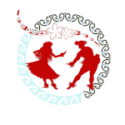In Tahitian dance (‘Ori Tahiti), ‘Amaha refers to a distinctive movement or gesture used to enrich storytelling and enhance the expressiveness of a performance. It is often connected to hand and arm movements, which play a crucial role in communicating emotions, narratives, and cultural symbolism in Tahitian dance.
https://www.youtube.com/watch?v=kXSNgLVU3jk
Understanding ‘Amaha
- Translation: The term ‘amaha can imply an opening or a welcoming gesture, symbolizing the idea of giving or embracing.
- Technique:
- Dancers extend their arms outward or upward, often with fluid, graceful motions.
- The hands may be positioned to form specific shapes or movements, emphasizing openness or an offering.
- The upper body and facial expressions typically accompany the movement, amplifying its emotional impact.
Role in Tahitian Dance
- Storytelling:
- In ‘aparima (a style of Tahitian dance focused on hand gestures and storytelling), ‘amaha is often used to depict themes such as welcoming, giving, or reaching out to nature, ancestors, or deities.
- It can symbolize generosity, the sharing of love, or a connection to the environment.
- Emotional Expression:
- The movement conveys openness and sincerity, allowing the dancer to express joy, gratitude, or reverence.
- Paired with subtle facial expressions, ‘amaha helps to establish a deeper connection with the audience.
- Cultural Symbolism:
- Like other gestures in Tahitian dance, ‘amaha is deeply rooted in Polynesian traditions and values, reflecting themes of community, spirituality, and harmony with nature.
Training and Performance
- Grace and Precision:
- Dancers learn to perform ‘amaha with controlled and flowing arm movements, avoiding stiffness while maintaining elegance.
- The hands and fingers are given special attention, as their positioning can significantly influence the visual impact of the gesture.
- Integration with Dance:
- ‘Amaha is typically incorporated into larger dance sequences, complementing the intricate hip movements and rhythmic footwork that define Tahitian dance.
- It may also be synchronized with transitions in music or shifts in storytelling.
Examples of Usage
- In a dance celebrating the natural beauty of Tahiti, ‘amaha could symbolize opening one’s arms to the ocean or sky.
- During a ceremonial or spiritual performance, it might represent an offering or a prayer to the gods.
